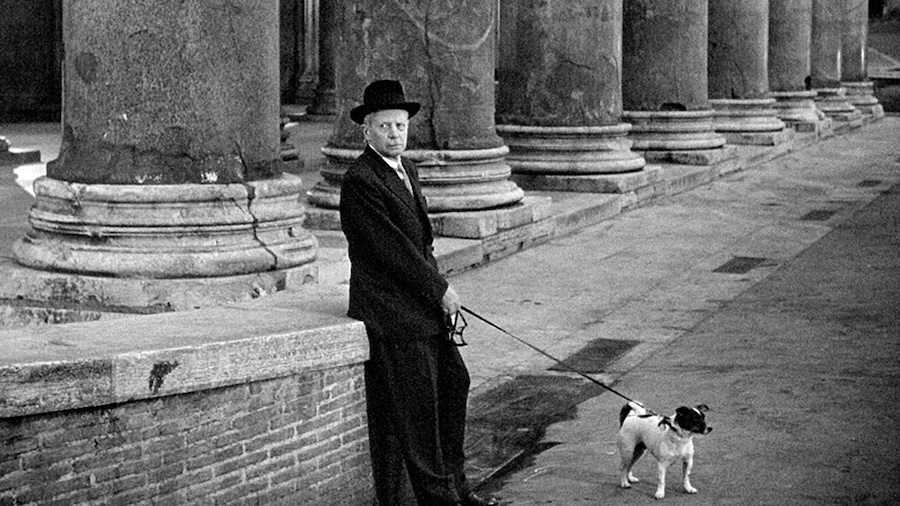

As in the case of Bicycle Thieves (1948), Vittorio De Sica would be criticized for Umberto D. by people who hated how he portrayed their nation in films. Future Prime Minister Giulio Andreotti wanted to see Italian movies that could rival Hollywood in commercial appeal. Neorealism may have become the defining film movement in Italian history, but it didn’t deliver the kind of broad comedies and historical epics that the conservative Andreotti wanted to see.
There were two scenes in Umberto D. that angered him: a street protest that’s broken up by the police and a suicide attempt near the end of the film. Andreotti wrote a letter to De Sica, telling him that his depiction of Italy constituted a ”wretched service to your fatherland”. Of course, Umberto D. did become another classic in De Sica’s impressive oeuvre.
A faithful bureaucrat all his life
It is during that street protest in Rome that we first meet Umberto D. His full name is Umberto Domenico Ferrari (Carlo Battisti), an elderly man who used to work for the government. A faithful bureaucrat all his life, he now has to survive on a very slim pension, which is more or less impossible. When Umberto returns to the room he’s renting after the protest, he finds that the landlady is using it for a business she has on the side: prostitution. Umberto is behind on the rent and will be evicted unless he comes up with 15,000 lire, a tall order for the more or less impoverished man. How will he and his dog, Flike, survive?
Not solely about the elderly
Umberto forms a bond with Maria (Maria-Pia Casilio), a young maid who’s working for the landlady. She confides in him that she’s pregnant and unsure of who the father is. We understand that this is not solely a story about the plight of the elderly in this new post-war Italy; poverty is a looming threat for the young as well. Not the ideal image that a man like Andreotti wanted to project.
De Sica dedicated the film to his father and there is a lot of love and emotion here that’s easy to recognize. There were also scenes where I suddenly started thinking about Chaplin (such as the brilliant moment when Umberto is considering begging as an alternative, using Flike as a pioneer). There’s nothing funny about this man’s situation, but De Sica was indeed a fan of Chaplin’s and his portrait of Umberto and his dog is so endearing and humanistic that it’s easy to spot the similarities. True to the neorealist ”rules”, De Sica and his loyal screenwriter/ideologue Cesare Zavattini made the movie in the streets of Rome, its ancient buildings and ruins not exactly conjuring an image of Italy on the move.
They also cast Umberto D. with amateurs, most notably Battisti in the lead, an academic and linguist who’s very effective as the increasingly desperate old man. Battisti was an old Fascist, which makes me wonder what his collaboration with De Sica looked like, but obviously they made it work beautifully.
The final scenes are devastatingly touching and poignant.
Simple and straightforward, made with a heart that beats for the unfortunate, Umberto D. is also an uncomfortable reminder to its audience (in any country, any era) that the line between prosperity and poverty is easily crossed. De Sica doesn’t spend the film preaching, he prefers to move us simply by showing what Umberto’s life looks like; the final scenes are devastatingly touching and poignant. A true companion piece with Bicycle Thieves.
Umberto D. 1952-Italy. 89 min. B/W. Directed by Vittorio De Sica. Screenplay: Cesare Zavattini. Cinematography: G.R. Aldo. Cast: Carlo Battisti (Umberto Domenico Ferrari), Maria-Pia Casilio (Maria), Lina Gennari (Antonia Belloni), Memmo Carotenuto.
Trivia: Co-produced by De Sica. Remade in France as A Man and His Dog (2008).
